
As much as I love the nicer and more refined electric bikes that use higher quality parts and better construction for years of worry-free riding, I understand how important the entry-level market is for making electric bicycles as accessible as possible. And e-bikes like the $799 Engwe L20 2.0 are putting more butts on seats than ever before, combining low prices with performance that will likely surprise you!
Of course the L20 2.0 isn’t going to rival e-bikes with double or triple the price, but it does oddly well for such an affordable e-bike. Between the comfortable ride and the go-anywhere attitude of the bike, I can see it working great for casual riders and local commuters alike.
To see my firsthand testing of this salmon-spawning pink e-bike, check out my ride video below. Or keep reading for the full details.
Engwe L20 2.0 video review
Engwe L20 2.0 tech specs
- Motor: 750W geared hub motor in the rear wheel (1,125 watts peak)
- Top speed: 45 km/h (28 mph)
- Range: Up to 45 km (28 mi) on throttle or 135 km (84 mi) on pedal assist
- Battery: 52V 13Ah (676 Wh)
- Weight: 31 kg (68 lb)
- Max load: 120 kg (264 lb)
- Brakes: Mechanical disc brakes on 180 mm rotors
- Extras: Rear rack, color LED display, integrated head/tail/brake LED lights, fender set, folding design

The Engwe L20 2.0 definitely takes on the familiar form we’ve seen from plenty of 20″ folding fat tire e-bikes before. Though I appreciate that they didn’t go full-fatty here, instead opting for the prudent compromise of 3.0″ tires.
But one rather unfamiliar design choice is the use of a 52V battery instead of a 48V battery. Putting my engineer hat on here for a second, I can tell you that it basically means a roughly 7-8% increase in power, assuming the same controller current. The reason is that instead of 13 lithium-ion battery cells, you’ve got 14. That allows the bike to run higher power without needing to pull more amperage and thus create more heat or further stress the controller.
The real-world difference isn’t huge, but it is a nice thing to see when everyone seems to want a bit more power than they already have. It may make aftermarket battery and/or charger replacement a bit more difficult, though you should really be using OEM parts anyway, unless you really know what you’re doing. Mixing battery chargers of different voltages is a no-no, so make sure you what the true charge voltage of your battery is when looking for a new charger.
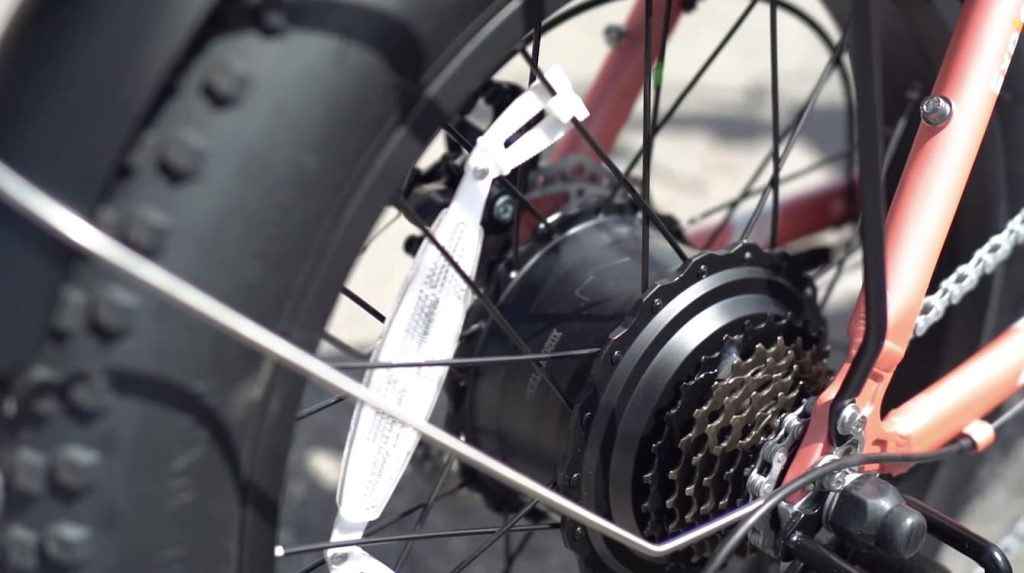
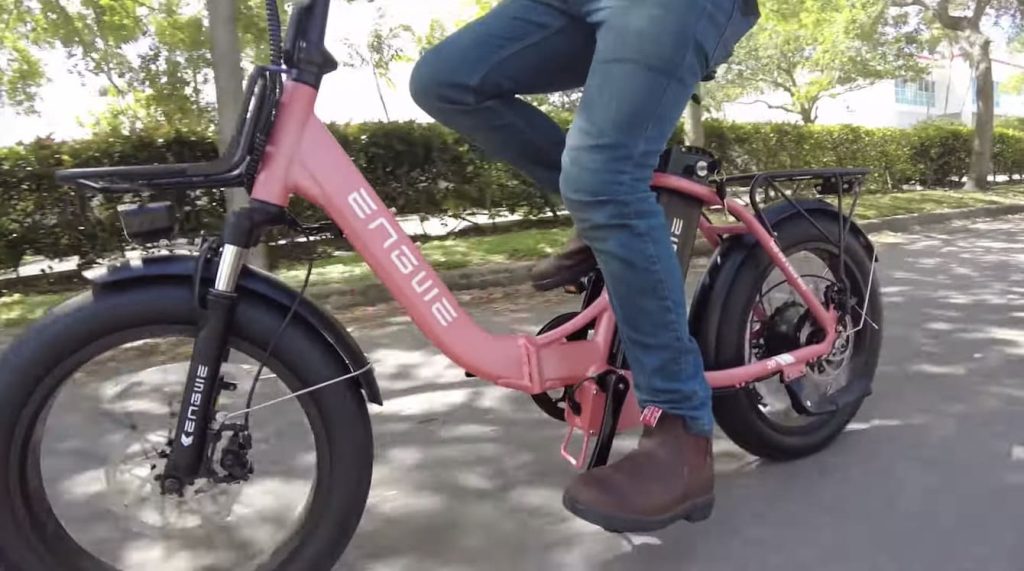

Despite the higher voltage, that battery is still average-sized, with its 13Ah capacity translating into 676 Wh of stored energy. The company says the throttle-only range is around 28 miles or 45 km. I believe that, especially since on throttle riding you can’t go faster than 20 mph (32 km/h).
They claim a much higher range on pedal assist, up to 84 miles (135 km). That’s likely only possible in the absolute lowest pedal assist level, so don’t expect to really go that far, especially not if you’re blasting around at the Class 3 top speed of 28 mph (45 km/h) that is enabled when using pedal assist.
But hey, it’s still a decent-sized battery and I like the power it gives you, with the motor claiming 750W nominal and 1,125W peak.
The motor is also rated at 75 Nm, which is quite torquey for an electric bike. It’s a bit above average for this class of 20″ folders, meaning you’ll have some good hill-climbing ability from the Engwe L20 2.0.
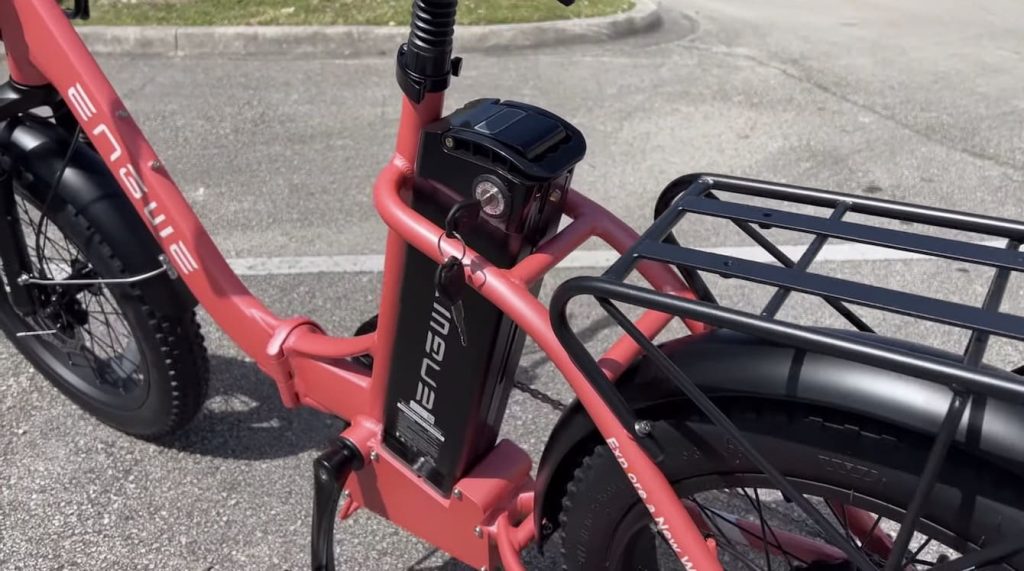
The bike itself is quite comfortable, featuring both front suspension and a suspension seat post. Neither are terribly high-end, but they both work fine for various recreational or leisurely commuter riding.
Don’t take it off any sweet jumps, but you can feel confident on pockmarked roads.
The inclusion of an easy-to-read color display is great, too. These displays can often look fine in the shade of your garage but instantly wash out when you roll a bike outside, but Engwe’s display does a good job of still being legible even when the sun comes out.

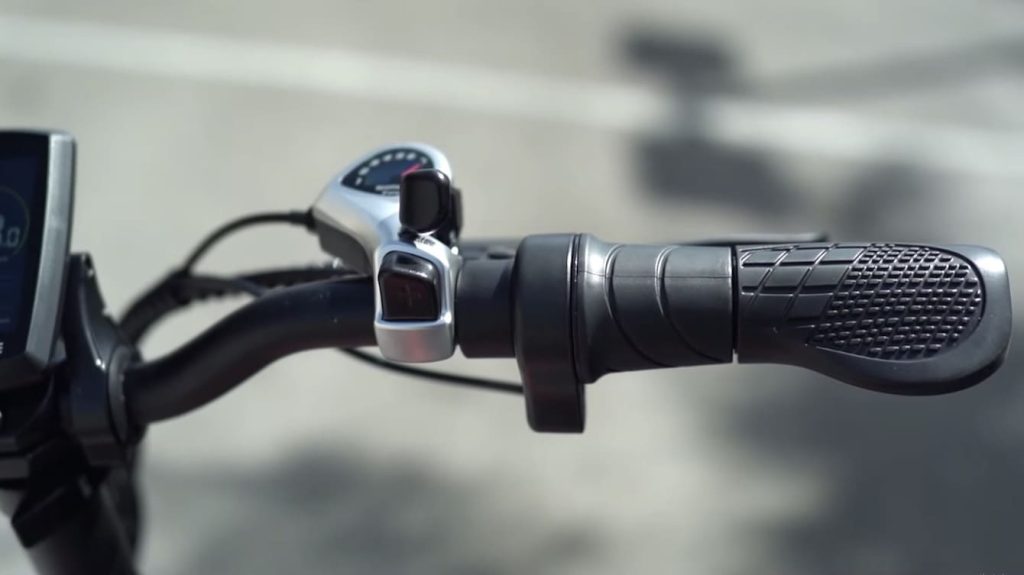
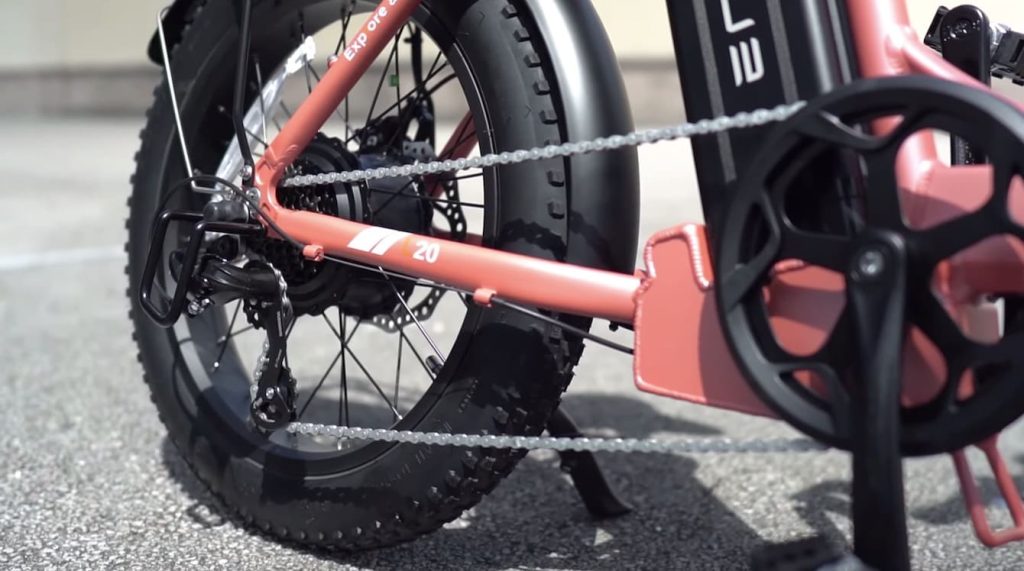
Other included parts like the fender set, the rear rack, the LED lighting in the front and rear, and the Shimano 7-speed shifter are all great to see on a $799 e-bike. Many of these parts are often held back behind paywalls from other companies, so I always enjoy getting everything included, especially on such a budget-priced bike.
I’m glad to see the bike comes in several colorways as well, including green, black, and the pink model I tested.
Though as comfortable and powerful as I find the e-bike, not everything is perfect.
For one, I find it has a surprisingly low max weight rating of just 264 lb (120 kg). While that’s fine for me, there’s a sizable chunk of the US public that would be excluded. But more importantly, I have to wonder what that says about the bike if it’s only certified up to 264 lb. Most e-bikes test higher, so is there a reason Engwe didn’t push it?
The bike is a hefty 68 lb (31 kg) by itself, so it’s not like this is a really lightweight e-bike that couldn’t support heavier loads. What gives?
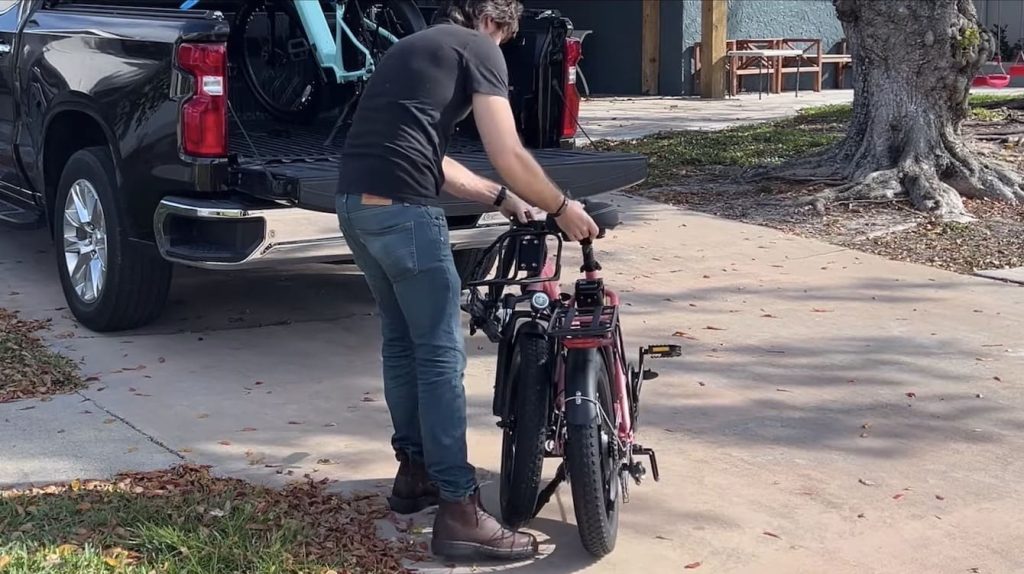

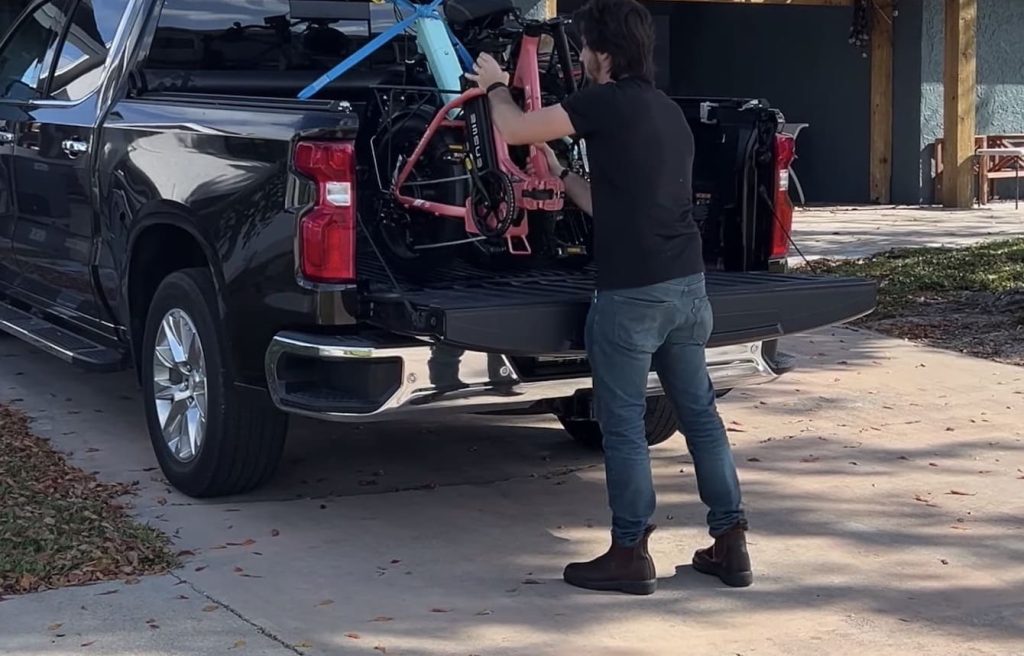
Next, the disc brakes are mechanical instead of hydraulic. That has a small advantage in that they’re easier to work on yourself, but the bigger disadvantage is that you’ll have to work on them much more often. Those cables stretch over time, meaning you’ve got to adjust them to retain your braking ability.
For $799, that’s largely to be expected. There are similarly-priced electric bikes with hydraulic brakes, but they are still pretty darn rare these days. That may change in a few years, but for now, sub-$1k e-bikes rarely have nicer juice brakes.
What’s the verdict here?
In conclusion, the Engwe L20 2.0 stands out as a surprisingly good option in the entry-level e-bike market. Its affordability and decent performance make it a compelling choice for those new to electric bicycles or those looking for a reliable and cost-effective commuting option. While it may not boast the high-end features of more expensive models, it delivers where it counts: comfort, usability, and an enjoyable riding experience.
For casual riders and local commuters, the Engwe L20 2.0 offers a practical and accessible entry point into the world of electric biking. It would definitely make a versatile companion for daily rides and weekend adventures, though its substandard components surely won’t give the same experience or longevity of more refined and pricier e-bikes.
If you’re seeking a budget-friendly e-bike that doesn’t compromise on essential features (even if it does compromise on the fancier features or lack thereof), the Engwe L20 2.0 is well worth considering. This bike proves that you don’t need to break the bank to enjoy the benefits of electric cycling.
